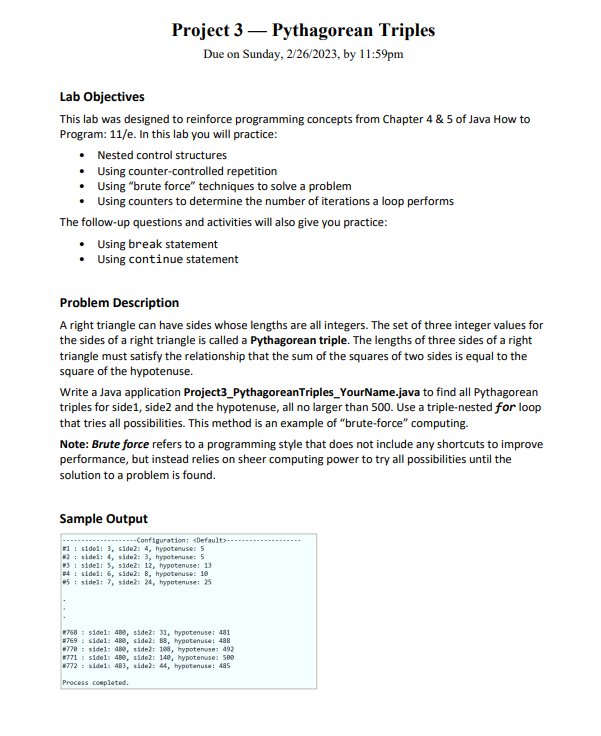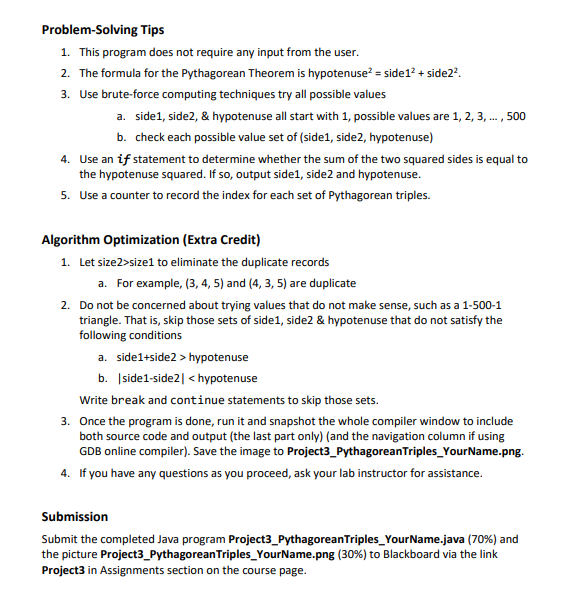Can you do this Java program pleas
Can you do this Java


The algorithm for the java program is:
Initialize a count variable to 0.
Start a triple nested loop, with variables side1, side2, and hypotenuse representing the three sides of a right triangle.
The outer loop iterates over side1 from 1 to 500.
The second loop iterates over side2 from 1 to 500.
The innermost loop iterates over hypotenuse from 1 to 500.
The innermost loop, check if the relationship between the three sides is a Pythagorean triple (side1^2 + side2^2 =
hypotenuse^2).
If the relationship is a Pythagorean triple, increment the count and print a message indicating the side lengths and the
triple number.
Repeat the innermost loop until all combinations of side1, side2, and hypotenuse have been checked.
Repeat the second and outer loops until all combinations of side1 and side2 have been checked with all values of
hypotenuse.
Trending now
This is a popular solution!
Step by step
Solved in 3 steps with 1 images









